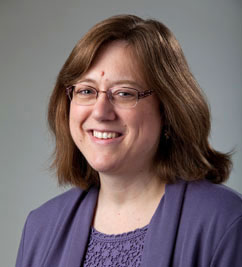Department Chairs Become Instructional Leaders
June 2, 2014

Carolyn Kelley
Distributed throughout a high school, department chairs are ideally positioned to help increase student learning, and yet they receive little or no formal training, and there is no universally accepted job description. Due to the ambiguities and multifaceted responsibilities of the role, the department chair is considered one of the most stressful positions in a high school.
The principal of a high school is in a position to help department chairs exert a positive influence on instruction and student learning, and yet this rarely occurs. As a consequence, the role of department chair has been called “the most underutilized leadership position” in high schools today (L. David Weller, University of Georgia).
UW–Madison education professor Carolyn Kelley and graduate student Jason Salisbury examined the opportunities for improving the success of department chairs in advancing learning. They worked with six large, urban, comprehensive high schools in two urban school districts.
Pennant Hills High School (a pseudonym) was one of the schools where they worked to strengthen leadership development, raise student learning outcomes, and reduce the achievement gap.
Across the country, many department chairs report that their responsibilities primarily involve managerial and bureaucratic tasks. This has only increased as policies and regulations demand more and more from schools, even as resources decline. At Pennant Hills, department chairs traditionally had served largely as schedulers and budget managers. Busy with administrative tasks, the chairs had not considered themselves instructional leaders, nor did their peers view them that way.
Working with Kelley and Salisbury, the Pennant Hills principal redefined the role of the chairs as instructional leaders, helping create a shared vision and building trust within the school’s leadership team to enable chairs to carry out that role. The principal also provided the chairs with professional development opportunities to support their development as instructional leaders.
Initially, however, Pennant’s department chairs felt uncomfortable with their redefined role. They were concerned that their peers would not accept them as legitimate leaders, and they believed they lacked the time and skills to carry out the new role.
But soon the chairs grew into the role of instructional leader. Some said the change was motivating and energizing. They gained confidence and felt committed to the importance of their new role. By year’s end the chairs had embraced the role of instructional leader. There was a greater trust and sense of community among the chairs, a willingness to turn to one another to solve problems, and a commitment to practicing effective leadership behaviors.
The principal at Pennant Hills was able to redefine the role of department chairs as instructional leaders through an explicit and purposeful process. The chairs were given time to shape and understand their new role and to form a community of support. The chairs demonstrated more awareness of their school’s achievement gaps and the structures, instructional practices, and beliefs that contributed to them. Over time, the department chairs became more engaged, empowered, and responsible for advancing instructional effectiveness in their schools.
This collaboration to strengthen leadership for learning in Wisconsin urban schools was part of a 5-year project funded by the Wallace Foundation. The partnership included the Wisconsin Department of Public Instruction, the University of Wisconsin-Madison, the University of Wisconsin-Milwaukee, Cardinal Stritch University, and the school districts of Madison, Milwaukee, Racine, Kenosha and Green Bay. Emeritus Professor Paul Bredeson and former Clinical Professor Jim Shaw also served as representatives to the project from UW-Madison.
For the complete report and additional case studies see “Defining and Activating the Role of Department Chair as Instructional Leader,” Journal of School Leadership, Vol. 23, March 2013.


